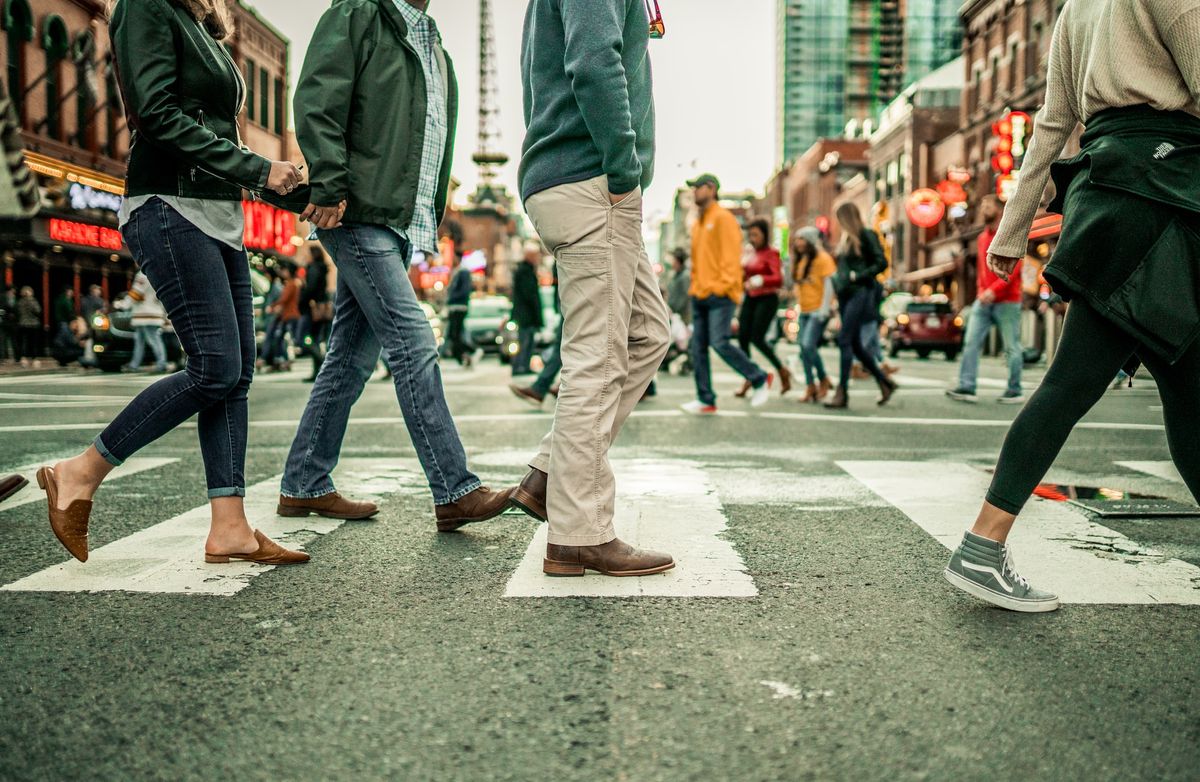Turning SUVs, Pickups More Likely to Hit Pedestrians

It’s not news that SUVs, pickups and other large vehicles cause more severe injuries than sedans when they hit pedestrians. Now a study finds that they’re also more likely to smash into pedestrians when turning.
“It’s possible that the size, shape or location of the A-pillars that support the roof on either side of the windshield could make it harder for drivers of these larger vehicles to see crossing pedestrians when they are turning,” says Wen Hu, a senior transportation engineer at the Insurance Institute for Highway Safety, which has been researching the relationship between SUVs and pedestrian deaths.
Pedestrian deaths have been rising steadily in the U.S., increasing nearly every year since hitting a low point in 2009, rising 59 percent to top 6,500 fatalities in 2020, the latest year for which data are available. The same year, another 54,700 pedestrians were injured in motor vehicle crashes. One suspected factor is the growing prevalence of larger vehicles.
Where vehicle type is concerned, earlier research has shown that SUVs and pickups — which are more widespread than ever in the U.S. fleet — are more lethal to pedestrians than cars. The new IIHS paper shows that certain types of pedestrian crashes — including those that occur while the vehicle is turning — are more likely to occur with SUVs, pickups, vans and minivans.
The researchers studied the most common types of single-vehicle, single-pedestrian crashes at or near intersections and at other locations. They then examined how involvement in these crashes varied for three larger vehicle types compared with cars.
SUVs, vans and pickups
At intersections, the odds that a crash that killed a crossing pedestrian involved a left turn by the vehicle versus no turn were about twice as high for SUVs, nearly three times as high for vans and minivans and nearly four times as high for pickups as they were for cars, IIHS researchers say.
The odds that a crash that killed a crossing pedestrian involved a right turn by the vehicle were also 89 percent higher for pickups and 63 percent higher for SUVs than for cars. Such turning crashes accounted for more than 900 of around 5,800 fatal pedestrian crashes at or near U.S. intersections during 2014-18.
At other locations, SUVs and pickups were associated with 51 percent and 25 percent greater odds than cars of killing a pedestrian walking or running along the road versus a fatal straight-on crash with a crossing pedestrian.
The fact that larger vehicles and walking-along-the-road crashes are both more common in rural areas might have contributed to those heightened odds, though the researchers considered whether the crash occurred in a rural area and other environmental factors in their analysis. Such incidents accounted for around 2,500 out of some 14,000 U.S. fatal pedestrian crashes that did not involve intersections.
More research will be needed to understand the role of visibility in these crashes. Earlier studies have shown that A-pillars — the struts connecting the roof to the vehicle’s body on either side of the windshield — can create blind spots that can make it difficult for drivers to see pedestrians and that these blind spots grow larger as A-pillars become wider.
While their heavier weight means that larger passenger vehicles need stronger pillars to protect occupants in rollover crashes, a systematic assessment of A-pillar design by vehicle type has not been conducted. Other design elements of larger vehicles could also impede drivers’ ability to see pedestrians, such as their high ride heights and long front ends.
“Improving vehicle design, along with addressing road infrastructure and vehicle speeds, can play an important part in reducing pedestrian crashes and fatalities,” Hu says. “Our findings suggest that looking at the problem through the lens of vehicle type could also be productive.”
Some general vehicle-design solutions that have already shown promise include AEB systems that can detect and avoid pedestrians or reduce impact speed; hood airbags; hoods that automatically pop up on impact; and more sloped front ends. The latest IIHS findings warrant a closer look at how the designs of larger vehicles affect driver visibility, IIHS said.
